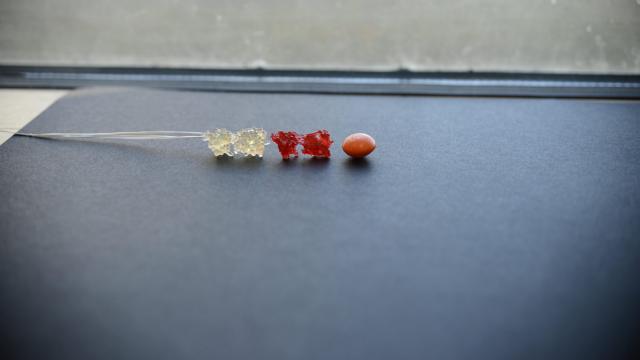Researchers say they’ve found a way to help make science lessons more interactive for students, particularly for those living with blindness. In a new study out Friday, a team of scientists detail creating bite-size and even candy-like models of molecules that kids can safely use their mouths to feel — models that seem to be as easily recognisable using our tongues as using our eyesight.
Study author Bryan Shaw is a chemistry professor at Baylor University in Texas. One aspect of his lab’s research involves trying to unravel the complex process of how proteins in the brain can turn rogue and misfold, leading to neurological disorders like amyotrophic lateral sclerosis. But another goal of his lab has been to help visually impaired students in high school better understand the basic principles of biochemistry, which eventually led them to consider creating these mouth models.
“Using the mouth to visualise complex imagery might help any student, but it was inspired by the need to make 3D imagery more accessible to students with blindness,” Shaw said in an email. His own son developed a rare form of eye cancer at a young age, which caused full blindness in one eye and significant impairment in the other.
The team’s research, published Friday in Science Advances, looked at how students interacted with several types of models they devised. These models were made to resemble molecules of protein such as hemoglobin, which helps our cells transport life-sustaining oxygen around the body. They created different sizes and used different materials for their models, including the sort of edible gelatin you would use for gummy bears.
And for non-edible models, they attached them to a safety loop of thread or floss to prevent students from accidentally swallowing them. All in all, their experiments found that kids, including those with blindness, could play with the models without harm, while their mouths were usually enough to help them recall shapes they were shown earlier.

“Your mouth — your tongue and lips — can help you visualise complex 3D imagery in science, even if the models are as small as a rice grain,” Shaw said. “Here we used 3D models of large protein molecules and [found that] your mouth can recall different molecular shapes at about 85% accuracy, which is comparable to eyesight. So your tongue can see about as well as your eyes!”
Aside from being a novel teaching tool, these models would also be fast and cheap to produce, as well as easy to store inside classrooms. The resin used for the non-edible models only costs around 10 cents ($0.13) per model, Shaw said. The edible versions would likely be even cheaper, though manufacturers wouldn’t be able to create them at the smallest size possible.
Shaw and his team plan to keep tinkering with their models. In the future, they plan to test out other features, like adding textures or relevant flavours. Ultimately, they hope to create something that can be widely adopted by schools that would expand everyone’s knowledge of science, especially people living with visual impairment.
“Chemistry is the central science, and it has historically excluded students with blindness. When you keep kids out of chemistry, you keep them from understanding other parts of science,” Shaw said. “We need to fix this and we’re trying to do our part here.”
